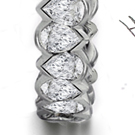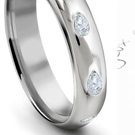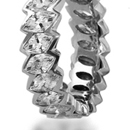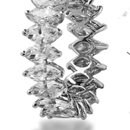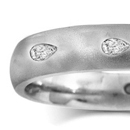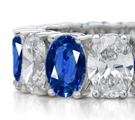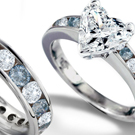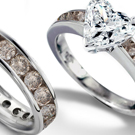
Diamond Engagement Rings
Diamod Solitaires with Side Accents
Diamond Wedding Bridal Set
3 Stone Diamond Rings
Diamond Solitaire Engagement Rings
Blue Diamond Engagement Rings
Pink Diamond Engagement Rings
Red Diamond Engagement Rings
Sapphire & Diamond Engagement Rings
Ruby & Diamond Engagement Rings
Emerald & Diamond Engagement Rings
Diamond Solitaire Engagement Rings
Diamond Wedding Rings
Womens Diamond Wedding Rings
Mens Diamond Wedding Rings
Handmade Wedding Rings
Eternity Diamond Rings
Cushion Cut Diamond Eternity Band
Princess Cut Diamond Eternity Band
Asscher Cut Diamond Eternity Band
Emerald Cut Diamond Eternity Band
Round Cut Diamond Eternity Band
Heart Shape Diamond Eternity Band
Marquise Cut Diamond Eternity Band
Radiant Cut Diamond Eternity Band
Pear Shape Diamond Eternity Band
Oval Cut Diamond Eternity Band
Baguette Cut Diamond Eternity Band
Trillion Cut Diamond Eternity Band
Diamond Earrings
Princess Cut Diamond Stud Earrings
Round Cut Diamond Stud Earrings
Asscher Cut Diamond Stud Earrings
Emerald Cut Diamond Stud Earrings
Diamond Pendants
Diamond Solitaire Pendant
Diamond Heart Pendant
Diamond Bracelets
Ladies Diamond Bracelets
Mens Diamond Bracelets
Engagement Ring Settings
Engagement Ring Settings for Radiant Cut Diamonds
Engagement Ring Settings for Cushion Cut Diamonds
Engagement Ring Settings for Heart Shape Diamonds
Engagement Ring Settings for Oval Cut Diamonds
Engagement Ring Settings for Pear Shape Diamonds
Engagement Ring Settings for Marquise Cut Diamonds
Engagement Ring Settings for Round Cut Diamonds
Engagement Ring Settings for Princess Cut Diamonds
Engagement Ring Settings for Asscher Cut Diamonds
Engagement Ring Settings for Emerald Cut Diamonds
Loose Diamonds
Filter By Shape
Emerald Cut Diamond Rings
Heart Shape Diamond Rings
Oval Cut Diamond Rings
Pear Shape Diamond Rings
Radiant Cut Diamond Rings
Marquise Cut Diamond Rings
Princess Cut Diamond Rings
Asccher Cut Diamond Rings
Round Cut Diamond Rings
Cushion Cut Diamond Rings
Pear Shape Diamond Eternity Bands
Home / Diamond Eternity Rings / Pear Shape Diamond Eternity Bands
The observers were in awe of the wonder inspired by the great beauty, sublimity and might of diamond eternity rings and everlasting love between you and your love. This special ring and it's story will most definitely become a treasured family memory and heirloom in the future.
Dreams of A Lifetime: Awe & Grandeur Dazzling Circle of Oval Diamonds Enshrined in Platinum Channel Setting
The pear shape is a combination of the round and marquise brilliant cuts. Technically it is called the Pear shaped brilliant diamond cut. Pead shaped diamonds usually have 58 facet brilliant pattern, but can be cut with different numbers of pavilion mains of 8, 7, 6, or 4 facets. The teardrop shape has a round or oval shape on half the facet while the other half resembles a marquise with the sides tapering to a point. Some of the world's largest and most famous diamonds were cut into the pear shaped brilliant cut. Pear shaped diamonds look beautiful in necklaces, dangles in earrings. They are also used in engagement rings and integral parts of custom designs.
The description of an Pear Cut Diamond is best described as being one half oval, and the other half marquise - pear-shaped or teardrop shaped. The stone is pointed at one end and round at the other. Ideally cut pear shapes have 58 facets. Aspect ratio of a Pear or teardrop cut: The ratio of the length to the width should be about 1.5:1
The modified brilliant-cut pear shaped diamond is a combination of a round and a marquise shape, with a tapered point on one end. The diamond is always worn with the narrow end pointing toward the hand of the wearer. Like marquise and oval cuts, the pear shaped diamond comes in a variety of slim to wide cuts, and has the added benefit of making the wearer's fingers appear longer and slimmer.
Ideally, a pear shaped diamond should possess excellent or very good symmetry. The point should line up with the apex of the rounded end. The shoulders and wings (the upper and lower curves on the right and left side of the diamond) should form uniform, symmetrical curves, with no straight edges. The rounded top should not appear narrow or squat, but like a semi-circle. In a misguided effort to add weight to a diamond (by incorporating more of the rough stone in the final cut) cutters may give the diamond added girth near the point or top, giving the diamond a squared off or squatty appearance.
While the length to width ratio of classic pear shaped diamonds is 1.40-1.70, personal preference will again dictate choice. The shape preference may also be affected by the diamond's eventual setting: A narrow pear diamond is ideal for dangle earrings, while a wider shape might be preferred for a solitaire ring. Every Lumera Diamond includes precise measurements, as well as the length to width ratio, so you know the exact shape of the pear shaped diamond you are considering.
Pear shaped diamonds posses some degree of bow-tie, varying from near invisible to severe. The visibility of a bow-tie effect cannot be ascertained by reviewing the diamond certificate or dimensions, but only upon visual inspection.
A pear diamond should always be set with a prong at the point - the most likely location for chipping on a pear cut diamond. Because this point was once nearest the outer edge of the rough stone, flaws such as naturals, extra facets, and other inclusions may be located here. Since the point is covered by a prong, these flaws will be invisible once the diamond is set. The only remaining concern would be if the flaws are significant enough to affect the stability of the diamond (this is extremely rare, however).
The chart below serves as a general guideline for evaluating the cut of a pear shaped diamond.
PEAR SHAPED DIAMOND - CUT GUIDE
| EXCELLENT | VERY GOOD | GOOD | FAIR | POOR | |
|---|---|---|---|---|---|
| Table % | 53 - 63 |
52 or 64 - 65 |
51 or 66 - 68 |
50 or 69 - 70 |
< 50 or > 70 |
| Depth % | 58 - 62 |
56 - 57.9 or 62.1 - 66 |
53 - 55.9 or 66.1 - 71 |
50 - 52.9 or 71.1 - 74 |
< 50 or > 74 |
| Girdle | Very Thin - Slightly Thick |
Very Thin to Thick |
Very Thin to Very Thick |
Ex. Thin to Ex. Thick |
|
| Culet | None | Very Small | Small | Medium | > Medium |
| L/W Ratio | 1.45 - 1.55 |
1.40 - 1.44 or 1.56 - 1.65 |
1.35 - 1.39 or 1.66 - 1.80 |
1.25 - 1.34 or 1.81 - 2.00 |
> 1.25 or < 2.00 |
Evaluating color in pear diamonds is subjective. Keep in mind that many buyers may actually prefer the ever so slightly warmer colors of a G-H diamond over the cool colorlessness of a D-F diamond. In fact, most of the premium in price associated with pear shaped diamonds at the higher end of the color scale is driven by supply and demand; customers want the D-F color grades, and are willing to pay a premium to get them. In a world without diamond color grading, the price premium for higher grades would be much lower, as the actual differences in color are difficult to perceive.
In larger pear diamonds (over 1 carat), the color may appear slightly darker at the point. For this reason, buyers may choose to move up one color grade as compared to other diamond shapes. The color chart below provides a general guide for evaluating color in pear shaped diamonds.
PEAR SHAPED DIAMOND - COLOR GUIDE
| EXCELLENT | VERY GOOD | GOOD | FAIR | POOR | |
|---|---|---|---|---|---|
| < .50 ct. | D - G | H - I | J - K | L - M | > M |
| .51-1.0 ct. | D - F | G | H - I | J - K | > K |
| 1.0-2.0 ct. | D - F | G - H | I - J | > J | |
| > 2.0 ct. | D - F | G | H - I | > I | |
| Fluoro | None | Faint - Med | Strong | Very Strong | |
Like color, evaluating clarity in pear diamonds is subjective. GIA provides excellent help with their clarity grades. Still, it is important to understand that each customer will have a unique standard for clarity. Some may be perfectly comfortable with an inclusion as long as they cannot easily see it. Others may insist on a more technically flawless appearance. The clarity chart below provides a general guide for evaluating clarity in pear shaped diamonds.
PEAR SHAPED DIAMOND - CLARITY GUIDE
| EXCELLENT | VERY GOOD | GOOD | FAIR | POOR | |
|---|---|---|---|---|---|
| < .50 ct. | FL - VS2 | SI1 - SI2 | I1 | I2 | > I2 |
| .51-1.0 ct. | FL - VS1 | VS2 - SI1 | SI2 | I1 - I2 | > I2 |
| 1.0-2.0 ct. | FL - VVS2 | VS1 - VS2 | SI1 - SI2 | I1 | > I1 |
| > 2.0 ct. | FL - VVS2 | VS1 - VS2 | SI1 | SI2 | > SI2 |
Questions about shape or other aspects of a diamond?
PHONE: 800 871 1066 STORE: 7W 45th Street # 707 New York, New York 10036 USA
Your Shopping Cart is Empty
Easy Payment
Free Fedex Shipping
Our Return Policy
Why Buy From Us
Ring Size Chart
Millimeters to Inches Scale
Ring Engraving
Ring Polishing
Gift Wrapping
Ring Boxes
Gift Certificates
Diamond Engagement Rings
